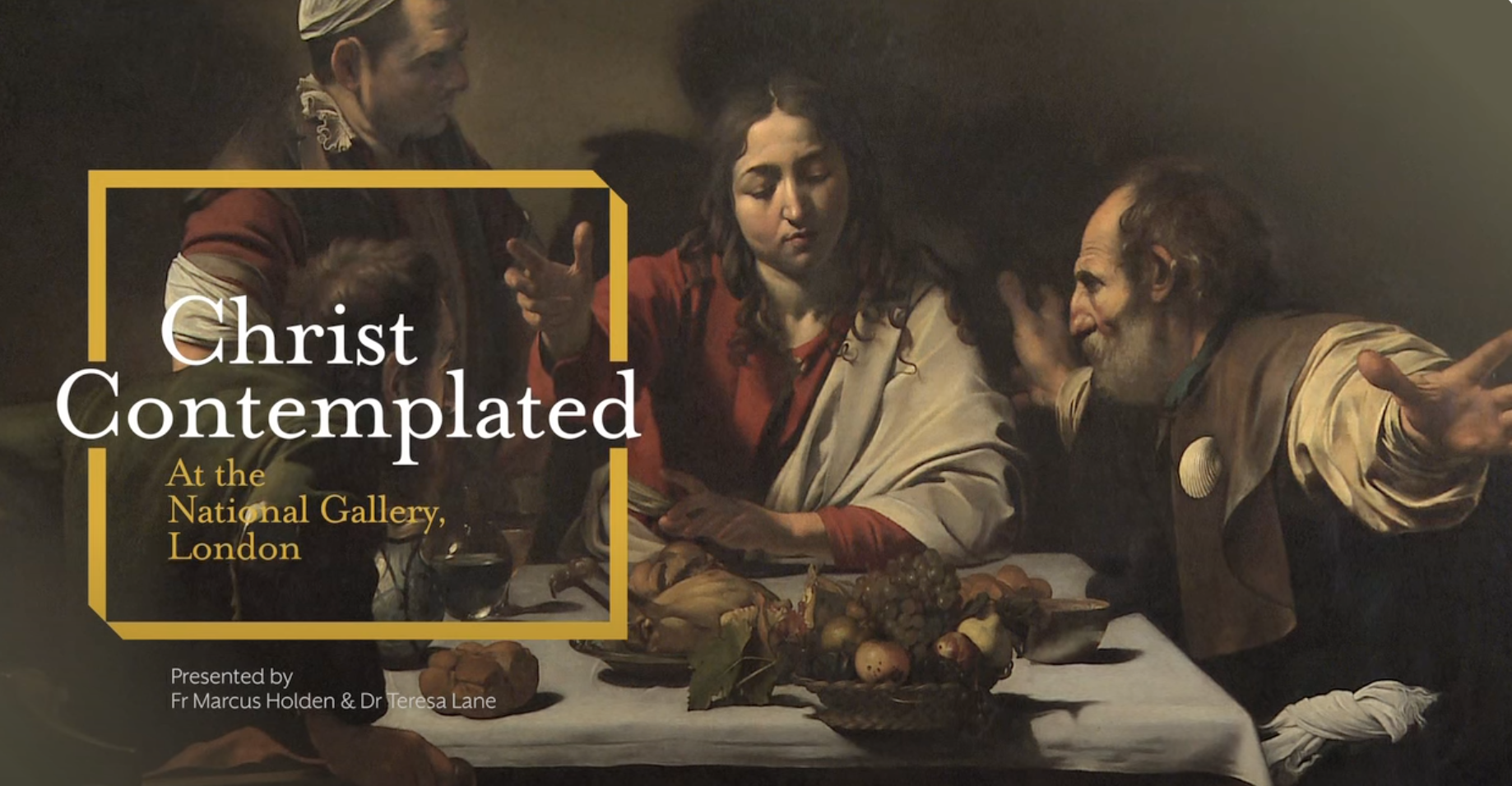George Weigel called Bishop Robert Barron’s series <em>Catholicism</em> “The most important media project in the history of the Catholic Church in America” – I would add in Europe, too – and it’s easy to see why. After years of beige and guitars, suddenly the Church was on view in its true beauty and majesty, with a clever, funny, on-the-ball nar ator who was an absolute natural on camera. Why had it taken so long for someone/anyone, let alone a Catholic priest, to exploit the new media riches on offer in order to display and investigate the incomparable riches of the Catholic Church?
In <em>Christ Contemplated</em>, Fr Marcus Holden, the parish priest at St Bede’s, South Clapham, London – another priest with a profound interest in using multimedia resources – has teamed up with Dr Teresa Lane, an associate lecturer at the Courtauld, to make an inspired documentary about 12 paintings in the National Gallery’s collection that explore, in his words, “<a href="https://catholicherald.co.uk/new-film-contemplates-mystery-of-christ-at-londons-national-gallery/"><mark style="background-color:rgba(0, 0, 0, 0)" class="has-inline-color has-vivid-cyan-blue-color">unique facets of the mystery of Christ</mark></a>”.
They start with Velasquez’s painting of <em>Christ after the Flagellation contemplated by the Christian Soul</em>, in which the soul is represented as a kneeling boy in the presence of Christ who, after the scourging, has collapsed; His limp body and pained expression display His exhaustion and suffering. Behind the boy is his guardian angel, directing him to consider the ruin of the man in front of him. A ray of light radiates from Christ’s head towards the boy’s heart, joining the child with Christ and, by extension, the viewer, too.
We are the witnesses here, plunged straight into the extraordinary mystery of Christ’s suffering. Once you’ve noticed what’s going on in this painting, it’s difficult to back away: it’s a Matthew 12:30 moment for the viewer, throwing down the gauntlet. “He who is not with me, is against me.” The American art critic Peter Schjeldahl said that “the only way to miss Velasquez is to be blind”. I had been blind to this painting and its message, scarcely glancing at it on my way to something more exciting: Piero or Titian, perhaps. No longer. Next time I will pay it the homage it deserves.
What is immediately obvious from the beginning of the discussion between Fr Holden and Dr Lane is how well they work together. He supplies the priestly focus with skill and enjoyment and she the art historian’s knowledge of the background and technical detail, turning what could quite easily be a dull lecture into something altogether different and completely compelling.
By the time we get to the second painting, Carlo Crivelli’s <em>Annunciation with Saint Emidius</em>, I’m gripped. The kneeling Virgin receives Christ into her womb by the Holy Spirit: a ray of light penetrates the elaborate Venetian façade of the building where a gorgeously-robed Mary calmly accepts her destiny under a half-drawn curtain, the same colour as her dress. The veil is pulled back, Fr Holden suggests, the truth revealed. An artfully placed apple on the edge of the painting reminds us of Genesis; we are witnessing the coming of the Second Adam.
We move swiftly on to <em>The Adoration of the Kings</em> by Jan Gossaert. I’ll never look at this painting again without remembering what was said about the detail: Caspar in ermine so realistically painted that you want to stroke it, Balthazar’s elaborately strange headdress, the gleaming gold vessels containing frankincense and myrrh, the sartorial splendour of the kings brilliantly contrasted with the luminous nakedness of the blonde Christ Child holding a gold coin like a toy; the outside world crashes up against the timeless serenity of the nativity, and Christ is dropped, as Fr Holden says, “behind enemy lines”.
We enter the hidden life of Christ, as depicted by Murillo in <em>The Heavenly & Earthly Trinities</em>, with its wonderfully drawn portrait of the Virgin and Child with St Joseph, whose handsome face looks out at the viewer with a mixture of humility and awe. Christ is holding the Virgin’s fingers but his other hand is laid flat on St Joseph’s palm, almost as if he is bestowing himself upon his earthly father.
With Piero’s incomparable <em>Baptism of Christ</em>, the public life of Jesus begins, winding its way towards Sebastiano del Piombo’s <em>The Raising of Lazarus</em>. I was particularly struck by how Martha turns away in disgust from the smell of her brother’s body as he is raised from the dead, casting off his dirty bandages; as the King James Bible says, “by this time he stinketh”.
Huge paintings, each a world in itself, are skilfully woven into the ongoing narrative, ending with <a href="https://catholicherald.co.uk/from-betrayal-to-benediction-three-cities-two-paintings-and-the-mighty-caravaggio/?swcfpc=1"><mark style="background-color:rgba(0, 0, 0, 0)" class="has-inline-color has-vivid-cyan-blue-color">Caravaggio’s <em>The Supper at Emmaus</em></mark></a>, in which you can practically hear the screech of the disciple’s chair as he rises f om it in astonishment at recognising Christ. The everyman servant figure next to Christ carries on, however, as if nothing has happened; but you can’t watch this documentary and believe that he is right.<br><em><br>Photo: Screenshot from the <a href="https://www.youtube.com/watch?v=aUqU5aMPitI"><mark style="background-color:rgba(0, 0, 0, 0)" class="has-inline-color has-vivid-cyan-blue-color">film’s trailer</mark></a>.</em>



